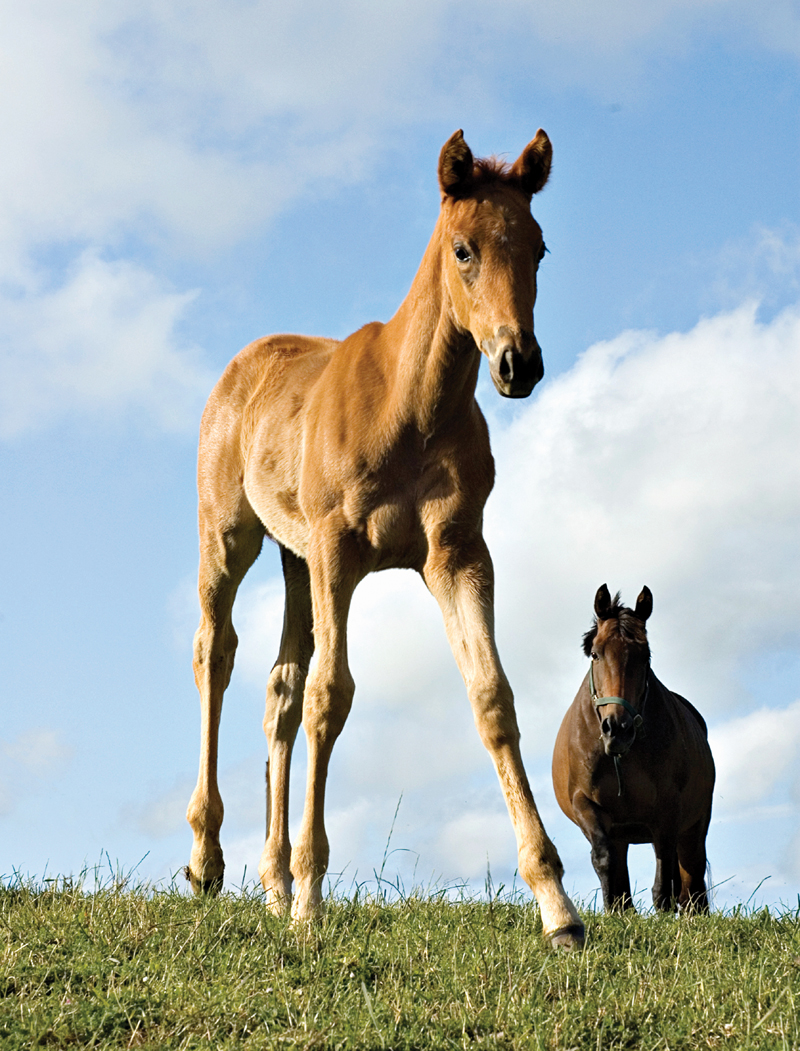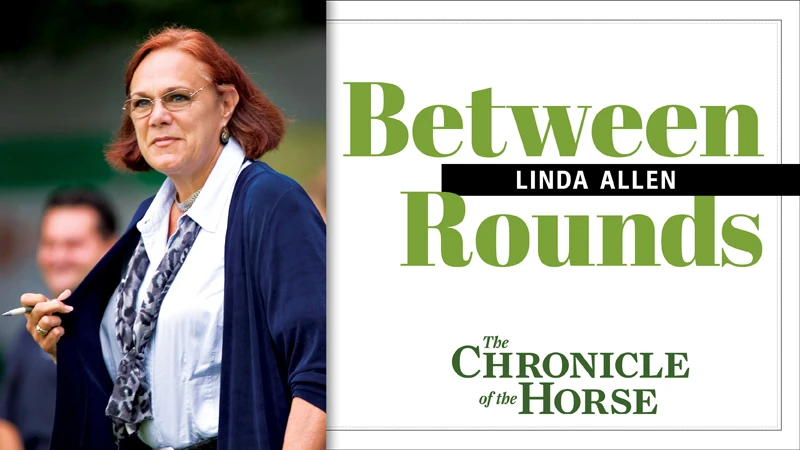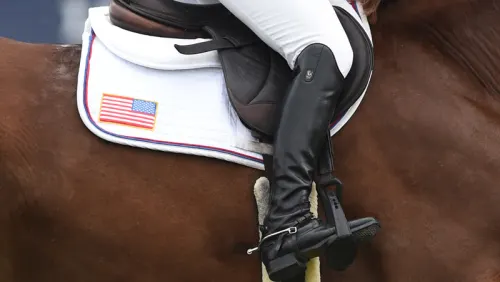Our columnist wants a more practical U.S. system for getting our young horses the mileage they need to reach the top.
New efforts are underway on both the national and international fronts to look, in an organized way, at the future of jumping. Interestingly, the impetus to do this reached critical mass on both levels at almost exactly the same time.
Internationally, the issues tend to focus on how the newer, high prize money individual events and the more traditional and important national team events can both thrive within the constraints of the calendar. The Fédération Equestre Internationale always faces the challenge of encouraging a relatively small and varied sport as it exists in many parts of the world to grow, while simultaneously fostering the increasingly professional sport in Western Europe. Not simple tasks.
We’re fortunate that our own extremely competent John Madden chairs the small but influential FEI Jumping Committee. I don’t believe that this committee has ever been led from this side of the ocean. The FEI has scheduled a multi-day gathering in early May for discussion of issues facing the sport.
Finding The Horses
Here at home, Open Forums have been held, and much has been written of late, including excellent coverage in The Chronicle of the Horse, about how best to tackle the challenges we face. The issues at the top of our list sometimes resemble the international ones but are also specific to our historic, geographic and socio-fiscal circumstances.
The single most pressing issue facing our elite group of professional grand prix competitors is that, unlike their counterparts living in Europe or athletes in other sports, it’s virtually impossible to make a living based solely on one’s competitive abilities. A competitive format that seldom draws spectators and thus sponsors, along with high costs of competing compared with prize money, means most every professional must also coach and deal in horses to stay on the road.
Our elite riders also face the difficulty of developing horses. No rider is much better than what he’s sitting on, and top horses are always hard to find. Just as a surgeon, no matter how much fame might be in his future, struggles during his long years of internship and residency, horses from 6 to 9 years are unlikely to earn much even with a top rider aboard. These years are essential, however, for education and gaining experience toward reaching the big league.
Diamonds In The Rough
Some of the best horses weren’t the easiest during their formative years. During the press conference in Toronto following the untimely death of Canadian Olympic gold medalist Hickstead, Eric Lamaze made quite a point of how difficult he had been when he was younger.
The horse traveled and competed with Eric for several years with no one—including Eric—having any clue that this tough little stallion would turn into the best horse in the world. Only once the education was there for him to move into the biggest classes did all that fight and toughness become directed into conquering whatever course he faced. How lucky for Hickstead, and the world of show jumping, that the horse was with a rider like Eric and that he had backers willing to continue with him during the early years, until his greatness shone through.
A recent FEI press release related the story of a German girl who broke through from a sterling young rider career to finishing a close second in a World Cup qualifier. Her main horse is one purchased by her father as a yearling. What struck me was her description of the horse as not so special during his early years. Like Hickstead, he only showed his true abilities once those long “school years” were behind him, and he was ready for the big tracks.
ADVERTISEMENT
Mileage Costs Money
This brings me to what I believe is the single factor that will hold us back from ever having the depth in international horses that we need for consistent success.
We have tough enough competition in our grand prix events to develop competitive skills in our riders. Prize money is good enough to permit an owner to keep a grand prix horse on the road. And we now have a good supply of raw material being produced by ever more savvy U.S. breeders. Yet we still see the majority of our elite riders purchasing horses who’ve had their early educations abroad. Why?
I believe if you ask those who are trying (or have tried) to bring horses up to the point that they have value to American buyers (i.e., when they’re ready to go to shows and pay their way or at least take a junior or amateur rider to some success), they find that it can’t be done in a way that makes sense from a business perspective.
The first handicap is our lack of experienced riders and trainers with a real interest in this part of the business. Pick any country in Western Europe, and you will find many capable riders with an education in the classical development of horses from 4 to 8 years. These individuals aren’t taking 12 or 20 students to shows every week or spending 40 weeks a year trying to break into the international sport; their niche is simply putting the appropriate kind of work into a small group of horses by riding them six days out of every week and taking them out for experience at one-day outings for young horses. The formula is five days at home training systematically and one day at venues geared not for competitive showing but for producing the best future jumpers—all at a reasonable cost. In general, it’s possible to put three years into a horse in Europe for about what six months of training and showing might cost here.

“European countries recognized what was necessary to bring horses from the field to the competition arena in a way that gives every horse the best chance and that doesn’t bankrupt owners,” said Linda Allen. Photo by George Clerk/iStockphoto
Unfortunately, in the United States (with the exception of a few isolated geographic areas) there’s simply nowhere to cost effectively put mileage into the raw product that comes from the breeding farm. Most breeders are forced to choose between trying to find buyers for horses at the barely green broke stage—and we all know how many Americans want to buy “babies”—or shelling out huge amounts of money to send their horses to a show rider/trainer. With today’s costs for having horses at multi-day shows ($1,000 to $2,000 and up per WEEK) on top of all other costs, it’s no wonder that so few can or will spend this sort of money on horses that are jumping for little to no prize money.
Until we find some solution to this huge hole in our system, I believe the significant number of potentially top horses being bred in the United States will simply fall through the cracks as they are pushed into the more lucrative junior and amateur ranks at younger ages, or else discarded as “too difficult” as Hickstead and the horse in Germany would have been if they hadn’t been lucky enough to fall into the right hands.
We Need A System
Our horse shows are simply too successful with their current format for there to be any interest in devoting resources to helping people develop horses. Even with the economic downturn there are plenty of people with the desire and means to compete, and it would take profits directly out of show management’s pocket to underwrite a young horse educational environment during the show day. It’s easier, more profitable and more popular to offer more lower classes for junior and amateur riders (riding any kind of horse).
A number of years ago the professional riders in Europe convinced the largest shows to offer three classes per major event with low prize money and low expenses in order to give their next generation of horses the mileage they needed. The shows agreed, and these classes for 7- and 8-year-olds have done a lot for the riders and the sport. Horses younger than that are not seen at international events (except for the World Breeding Championships), but each country has found its own means of providing for them at the national level.
One of the more complete systems is found in Germany, where young horse classes for 5- to 7-year-olds take place practically every day of the week. Classes are so large that few shows can accommodate them, so separate non-show days are often used. Horses are given what they call “style scores” – though the style is heavily weighted toward potential to jump 1.50 meters or higher. In other words, forget hunter judging. Scores serve to qualify horses for the national championships. Courses are consistently set to encourage confident and clean jumping at each age level; difficulty is gradually increased throughout the year to provide appropriate experience without discouraging horses or setting them back in their development.
These venues also serve as shopping marts since so many young horses can be seen, in age groups, over appropriate courses. Breeders receive excellent feedback on how their produce compares to others of the same age, and potential buyers can keep track of a large group of horses over a period of time. Rewards come from sales—or producing a future star—while costs are extremely low, perhaps $50 to $100 per day depending on the distance traveled from home.
ADVERTISEMENT
Not only do these provide opportunity for inexpensive mileage, but also the records (how many rounds jumped and their scores) provide proof of what the horses have done.
Our Horses Deserve A Better Chance
In a nutshell, European countries recognized what was necessary to bring horses from the field to the competition arena in a way that gives every horse the best chance and that doesn’t bankrupt owners or raise the price on the horses beyond what the market will bear. We have no such system. Without creating something new for this purpose I just don’t see the requisite VOLUME of horses bred here getting the chance they deserve. Without starting correctly with hundreds, or thousands, of horses, we’ll never have enough truly exceptional ones to provide depth for our future teams.
The problem with something new is that American horse people have an inherent distrust of anything that varies from the norm. While re-reading the book The De Nemethy Years, I came across this quote, “Unlike other countries,” he observes, “the United States is slow to change.” Bert was referring to the lack of education and licensing of course designers, which happened nearly
20 years after he spoke those words. Whether it be separate sections for amateur riders, temporary stabling at shows, immediate jump-off format, or creating new and different means for people to put appropriate mileage on young horses at a reasonable cost, the first response has always been “no way” will that work.
Last year I suggested a possible solution in the form of the Benchmark Program. The objectives are:
1) a friendly environment for novice horses or riders to train away from home; 2) an inexpensive one-day opportunity to jump a course that ensures every horse goes home more confident and educated than he came; 3) a verifiable record of the horses’ experience to help with sales; and 4) eventual development of face-to-face marketing of young horses.
A handful of these one-day rallies were hosted on the West Coast last year, and more are being planned. (See thebenchmarkprogram.com for more information.)
It’s never easy to introduce anything new. The fact that Benchmark Rallies are not shows, and the format varies from shows in order to meet the four objectives above, seems too much for many to understand. Overhead to host a Rally is intentionally kept low, so that they can be hosted at suitable non-show facilities, but the fact that there is not a great deal of money to be made is a deterrent in some cases. One prominent professional’s comment on reading about Benchmark was, “Now, if the shows would offer this in just one of their rings the day before the show starts, people would be able to ship horses in just for that, plus those participating in the show could use it for schooling as well.”
I hope that it’s not 20 years before we see something practical and cost effective in our country for those working so hard to produce young horses. For all the other issues facing our growing discipline, it’s going to be interesting to see what comes out of the national and international discussions. What direction will be taken in the coming years, and how willingly will all the various stakeholders come together to problem solve and take our sport to a new level?
Noted international course designer Linda Allen created the show jumping courses for the 1996 Atlanta Olympics and the 1992 FEI World Cup Finals. She’s a licensed judge, technical delegate and a former international show jumper. She lives in Fillmore, Calif., and San Juan Cosalá, Jalisco, Mexico, and founded the International Jumper Futurity and the Young Jumper Championships. Allen began writing Between Rounds columns in 2001.
If you enjoyed this article and would like to read more like it, consider subscribing. “Looking For The Horses Of Our Future” ran in the Feb. 20, 2012, Show Jumping issue. Check out the table of contents to see what great stories are in the magazine this week.















